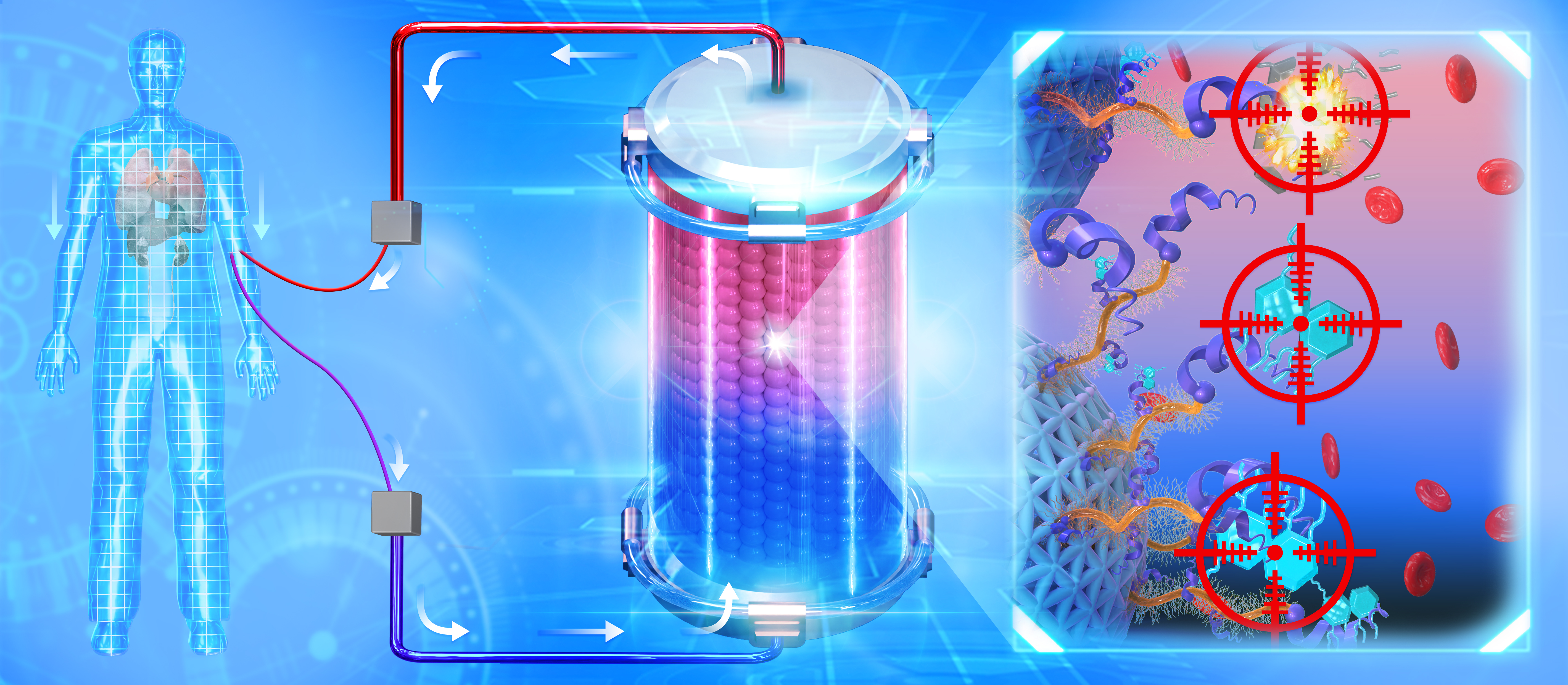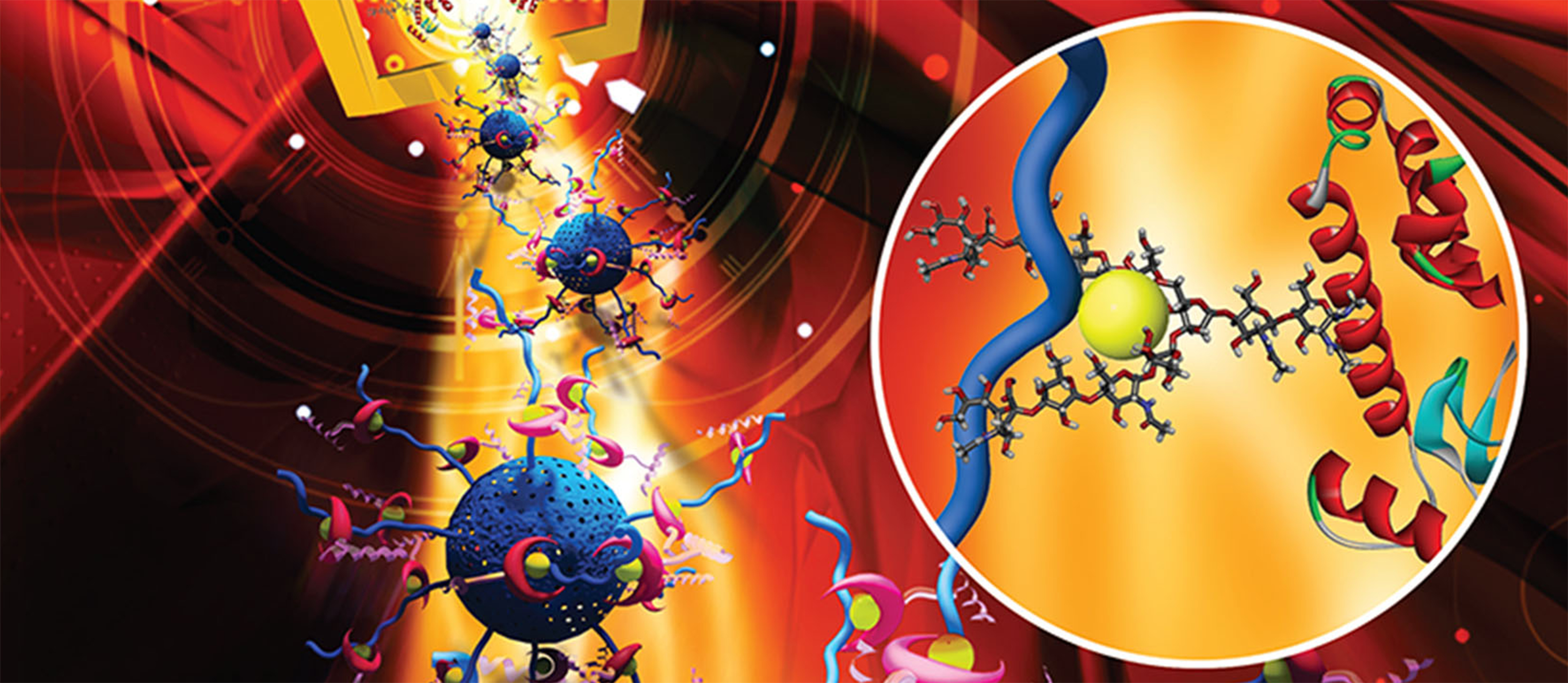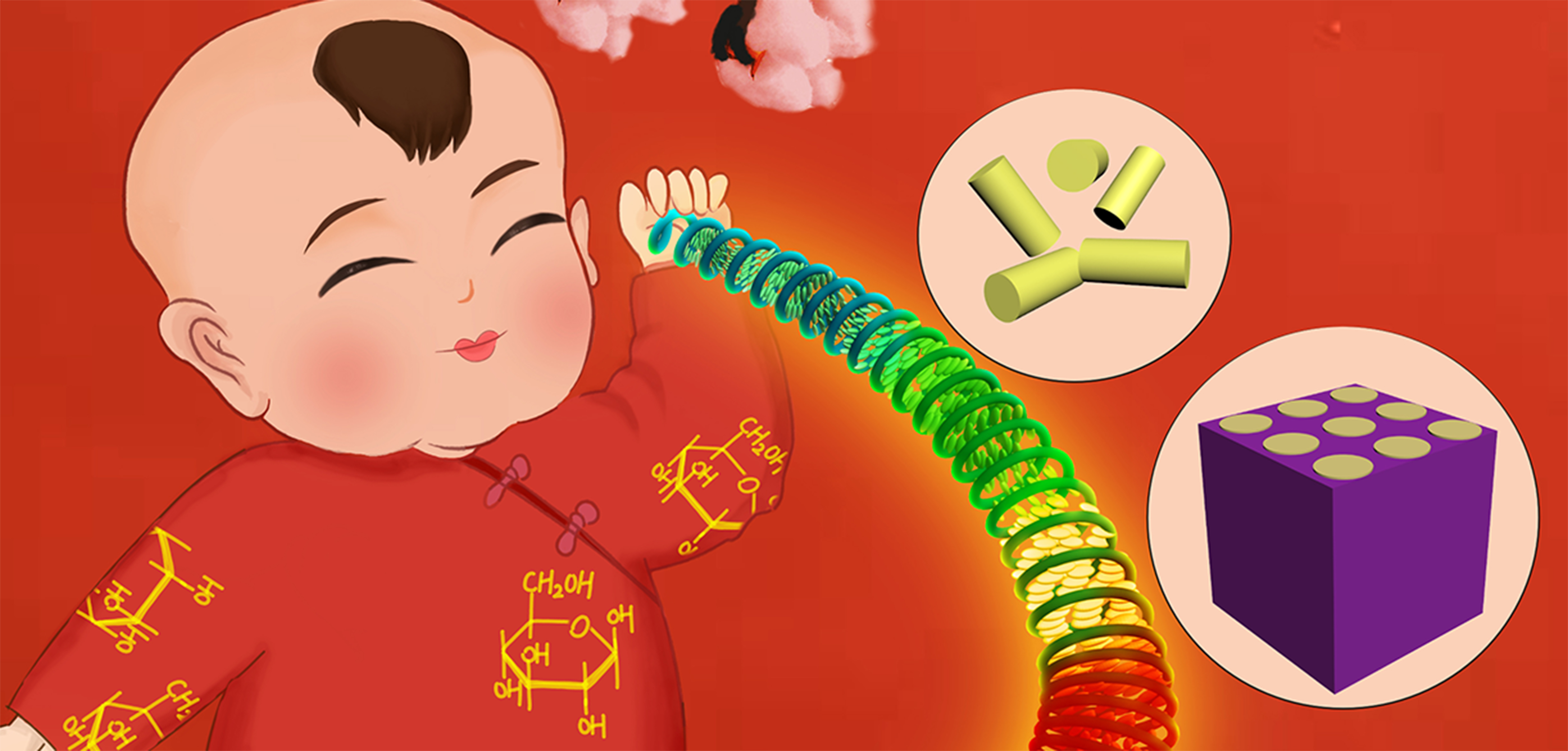1.以第一作者或通讯作者发表的SCI论文:
[1] Minmin Li, Yuting Xiong, Xinmiao Liang,* Guangyan Qing,* et al. Identification of tagged glycans with a protein nanopore. Nat. Commun. 2023, 14, 1737.
[2] Cunli Wang, Bo Liu,* Guangyan Qing,* et al. Secreted endogenous macrosomes reduce Aβ burden and ameliorate Alzheimer’s disease. Sci. Adv. 2023, DOI: 10.1126/sciadv.ade0293.
[3] Zhengqiang Shi, Guangyan Qing,* et al. Specific Clearance of Lipopolysaccharide from Blood Based on Peptide Bottlebrush Polymer for Sepsis Therapy. Adv. Mater. 2023, DOI: 10.1002/adma.202211124.
[4] Yongxin Chang, Guangyan Qing,* et al. Label-free, versatile, real-time, and high-throughput monitoring of tyrosine phosphorylation based on reversible configuration freeze. CCS Chem. 2022, 10.31635/ccschem.022.202202070.
[5] Fusheng Zhang, Guangyan Qing,* et al. Multimodal, convertible, and chiral optical films for anti-counterfeiting labels. Adv. Funct. Mater. 2022, 32, 2204487.
[6] Xiaopei Li, Guangyan Qing,* et al. A novel aggregation-induced enhanced emission aromatic molecule: 2-aminophenylboronic acid dimer. Chem. Sci. 2021, 12, 12437–12444.
[7] Minmin Li, Yuting Xiong, Xinmiao Liang,* Guangyan Qing,* et al. Functional nanochannels for sensing tyrosine phosphorylation. J. Am. Chem. Soc. 2020, 142, 16324–16333.
[8] Yuting Xiong, Xiuling Li, Xinmiao Liang,* Guangyan Qing,* et al. What is hidden behind schiff base hydrolysis? Dynamic covalent chemistry for the precise capture of sialylated glycans. J. Am. Chem. Soc. 2020, 142, 7627–7637.
[9] Xue Wang, Cunli Wang, Huiying Chu, Guohui Li,* Guangyan Qing,* et al. Molecular chirality mediated amyloid formation on phospholipid surfaces. Chemical Sciences, 2020, 11, 7369–7378.
[10] Minmin Li, Yuting Xiong, Xinmiao Liang,* Guangyan Qing,* et al. Biomimetic nanochannels for the discrimination of sialylated glycans via a tug-of-war between glycan binding and polymer shrinkage. Chemical Sciences, 2020, 11, 748–756.
[11] Guangyan Qing, Qi Lu, Jing Liu, Mingliang Ye, Xiuling Li,* Xinmiao Liang,* Taolei Sun*, Hydrogen bond based smart polymer for highly selective and tunable capture of multiply phosphorylated peptides. Nature Commun. 2017, 8, 461.
[12] Guangyan Qing, Taolei Sun,* et al. New opportunities and challenges of smart polymers in post-translational modification proteomics. Adv. Mater. 2017, 29, 1604670.
[13] Guangyan Qing,* Shiliong Zhao, Taolei Sun,* et al. Chiral effect at protein/ graphene interface: A bioinspired perspective to understand amyloid formation. J. Am. Chem. Soc. 2014, 136 (30), 10736–10742.
[14] Guangyan Qing, Xingxing Shan, Taolei Sun,* et al. Solvent-driven chiral-interaction reversion for organogel formation. Angew. Chem. Int. Ed. 2014, 53 (8), 2124–2129.
[15] Guangyan Qing, Taolei Sun.* Chirality-driven wettability switching and mass transfer. Angew. Chem. Int. Ed. 2014, 53 (4), 930–932.
[16] Guangyan Qing, Taolei Sun.* Transforming chiral signals into macroscopic properties of materials using chirality-responsive polymers. NPG: Asia Materials 2012, 4, e4.
[17] Guangyan Qing, Taolei Sun.* Chirality triggered wettability switching on smart polymer surface. Adv. Mater. 2011, 23 (14), 1615–1620.
[18] Guangyan Qing, Hai Xiong, Frank Seela,* Taolei Sun.* Spatially controlled DNA nanopatterns by “click” chemistry using oligonucleotides with different anchoring sites. J. Am. Chem. Soc. 2010, 132 (43), 15228–15232.
[19] Guangyan Qing, Xing Wang, Harald Fuchs, Taolei Sun.* Nucleotide responsive wettability on smart polymer surface. J. Am. Chem. Soc. 2009, 131 (24), 8370–8371.
----------------------------------------------------------------------------------------------------------
[19] Qiongya Li, Fusheng Zhang,* Guangyan Qing,* et al. Sustainable, Insoluble, and Photonic Cellulose Nanocrystal Patches for Calcium Ion Sensing in Sweat. Small 2023, DOI: 10.1002/smll.202207932.
[20] Minmin Li, Guangyan Qing,* et al. Hierarchically engineered nanochannel systems with pore-in/on-pore structures. NPG Asia Mater. 2023, 15, 16.
[21] Yongxin Chang, Guangyan Qing,* et al. Halogen Bond-Driven Aggregation-Induced Emission Skeleton: N‑(3-(Phenylamino)allylidene) Aniline Hydrochloride. ACS Appl. Mater. Interfaces. 2023, 15, 9751–9763.
[22] Jie Xiao, Xinmiao Liang,* Guangyan Qing,* et al. Photoswitchable Nanoporous Metal−Organic Framework Monolayer Film for Light-Gated Ion Nanochannel. ACS Appl. Nano Mater. 2023, 6, 2813–2821.
[23] Ce Bi, Yahui Zhang,* Guangyan Qing,* et al. Electrochemical Reduction of Diarylketones and Aryl Alkenes. ChemCatChem 2023, e202300258.
[24] Hang Yang, Guangyan Qing,* et al. Self-assembly of phosphorylated peptide driven by Dy3+. Chin. Chem. Lett. 2022, DOI: 10.1016/j.cclet.2022.108106.
[25] Xiaohuan Huang, Guangyan Qing,* et al. Unique three-component co-assembly among AIEgen, L-GSH, and Ag+ for the formation of helical nanowires. Aggregate 2022, DOI: 10.1002/agt2.272.
[26] Jie Xiao, Zhichao Zhu,* Guangyan Qing,* et al. Sialylated glycan-modulated biomimetic ion nanochannels driven by carbohydrate-carbohydrate interactions. NPG Asia Materials 2022, 14, 52.
[27] Xue Wang, Guangyan Qing,* et al. Aspartic acid-modified phospholipids regulate cell response and rescue memory deficits in APP/PS1 transgenic mice. ACS Chem. Neurosci. 2022, 13, 2154–2163.
[28] Wenqi Lu, Guangyan Qing,* et al. Recent advance in solid state nanopores modification and characterization. Chem. Asia J. 2022, 17, e202200675.
[29] Wenqi Lu, Yucheng Cao, Guangyan Qing.* Bioinspired sialic acid regulated ion nanochannel. Adv. Mater. Interfaces 2022, 9, 2200186.
[30] Wenna Ge, Guangyan Qing,* Yahua Liu,* et al. Sensitive chemoselectivity of cellulose nanocrystal films. Cellulose 2022, 29, 4097–4107.
[31] Xiancheng Zhang, Xiaoyu Zhang, Huiling Gao, Guangyan Qing.* Phage display derived peptide for Alzheimer's disease therapy and diagnosis. Theranostics 2022, 12, 2041–2062.
[32] Wenna Ge, Fusheng Zhang,* Guangyan Qing,* Yahua Liu,* et al. Highly tough, stretchable, and solvent-resistant cellulose nanocrystal photonic films for mechanochromism and actuator properties. Small 2022, 18, 2107105.
[33] Qianying Sheng, Minbo Lan,* Guangyan Qing,* Xinmiao Liang, et al. High-efficiency two-dimensional separation of natural products based on β-cyclodextrin stationary phase working in both hydrophilic and reversed hydrophobic modes. J. Chromatogr. A 2022, 1673, 463069.
[34] Mingyang Li, Guangyan Qing,* Yuan Liu,* et al. Biomimetic Ion Nanochannels for Sensing Umami Substances. Biomaterials 2022, 282, 121418.
[35] Cunli Wang, Guangyan Qing,* et al. Chin. Chem. Lett. 2022, 34, 107332.
[36] Xintong Zheng, Yanyan Zhao,* Haijuan Qin,* Guangyan Qing,* et al. Talanta 2022, 12, 2041–2062.
[37] Yuting Xiong, Guangyan Qing,* et al. Discerning tyrosine phosphorylation from multiple phosphorylations using a nanofluidic logic platform. Anal. Chem. 2021, 93, 16113–16122.
[38] Minmin Li, Yuting Xiong,* Guangyan Qing,* et al. Biomimetic calcium-inactivated ion/molecular channel. Chem. Commun. 2021, 57, 7914–7917.
[39] Zhonghui Chen, Guangyan Qing,* Taolei Sun,* et al. A biomimetic design for sialylated glycan-specific smart polymer. NPG Asia Materials 2018, 10, e472.
[40] Xue Wang, Guangyan Qing,* et al. Self-assembly gel-based dynamic response system for specific recognition of N-acetylneuraminic acid. J. Mater. Chem. B, 2021, 9, 4690–4699.
[41] Hang Yang, Guangyan Qing,* Solid-state nanopores and nanochannels for the detection of biomolecules. Chem. Phys. Rev. 2021, 2, 021306.
[42] Minmin Li, Yuting Xiong, Guangyan Qing,* Comment on preparation of vortex porous graphene chiral membrane for enantioselective separation. Anal. Chem. 2021, 93, 4682–4684.
[43] Fusheng Zhang, Guangyan Qing,* et al. Highly strong and solvent-resistant cellulose nanocrystal photonic films for optical coatings. ACS Appl. Mater. Interfaces 2021, 13, 17118–17128.
[44] Dongdong Wang, Tianxin Bai, Guangyan Qing,* et al. Sensing mechanism of excited-state intermolecular hydrogen bond for phthalimide: Indispensable role of dimethyl sulfoxide. Chin. J. Chem. 2021, 39, 1113–1120.
[45] Yahui Zhang, Xiangyu Zhao, Guangyan Qing,* et al. Selective electrocatalytic hydroboration of aryl alkenes. Green Chem. 2021, 23, 1691–1699.
[46] Fusheng Zhang, Xintong Zheng, Guangyan Qing,* et al. Synthesis of optically active chiral mesoporous molybdenum carbide film. J. Indu. Eng. Chem. 2021, 94, 482–488.
[47] Qianying Sheng, Minbo Lan,* Guangyan Qing,* et al. Highly efficient separation of methylated peptides utilizing selective complexation between lysine and 18-crown‑6. Anal. Chem. 2020, 92, 15663–15670.
[48] Yongxin Chang, Kuoxi Xu,* Guangyan Qing,* et al. Visible and reversible restrict of molecular configuration by copper ion and pyrophosphate. ACS Sensors 2020, 5, 2438–2447.
[49] Shengyan Ji, Guangyan Qing,* et al. cAMP sensitive nanochannels driven by conformational transition of a tripeptide-based smart polymer. Chem. Commun. 2020, 56, 3425–3428.
[50] Qi, Lu, Xiuling Li,* Guangyan Qing,* High-efficiency phosphopeptide and glycopeptide simultaneous enrichment by hydrogen bond−based bifunctional smart polymer. Anal. Chem. 2020, 92, 6269–6277.
[51] Zhonghui, Chen,* Ziyu Lv, Yifeng Sun, Zhenguo Chi,* Guangyan Qing,* Recent advancements in polyethyleneimine-based materials and their biomedical, biotechnology, and biomaterial applications. J. Mater. Chem. B 2020, 8, 2951–2973.
[52] Zhixiang, Taolei Sun, Guangyan Qing,* CAMP-modulated biomimetic ionic nanochannels based on smart polymer. J. Mater. Chem. B 2019, 7, 3710–3715.
[53] Yunlong Li, Guangyan Qing,* et al. Developing a calcium-actuated ionic nanochannel system by mimicking biological Ca2+-induced Ca2+ release process. NPG Asia Materials 2019, 11, 46.
[54] Xiaofei Zhang, Xiuling Li,* Guangyan Qing,* et al. Smart polymers driven by multiple and tunable hydrogen bonds for intact phosphoprotein enrichment. Sci. Tech. Adv. Mater. 2019, 20, 858–869.
[55] Kenan Shao, Guangyan Qing,* et al. Circularly polarized light modulated supramolecular self-assembly for azobenzene-based chiral gel. RSC Adv. 2019, 9, 10360-10363.
[56] Fusheng Zhang, Xinmiao Liang,* Guangyan Qing,* et al. Excellent chemoselectivity of pristine nanocrystalline cellulose films driven by carbohydrate–carbohydrate interactions. ACS Appl. Mater. Interfaces 2019, 11, 13114−13122.
[57] Guangyan Qing, Xiuling Li,* Xinmiao Liang,* et al. Recent advances in hydrophilic interaction liquid interaction chromatography materials for glycopeptide enrichment and glycan separation. Trends in Anal. Chem. 2020, 124, 115570.
[58] Minmin Li, Yuting Xiong, Guangyan Qing,* Smart bio-separation materials. Trends in Anal. Chem. 2020, 124, 115585.
[59] Qi Lu, Guangyan Qing,* Taolei Sun,* et al. Developing an inositol phosphate-actuated nanochannel system by mimicking biological calcium ion channels. ACS Appl. Mater. Interfaces 2017, 9 (38), 32554–32564.
[60] Yuting Xiong, Guangyan Qing,* Xiuling Li,* et al. Sialic acid-responsive polymeric interface material: From molecular recognition to macroscopic property switching. Scientific Reports 2017, 7, 40913.
[61] Zhonghui Chen, Ziyu Lv, Guangyan Qing,* Taolei Sun.* Exploring the role of molecular chirality in the photo-responsiveness of dipeptide-based gels. J. Mater. Chem. B 2017, 5 (17), 3163–3171.
[62] Wenrui Chen, Guangyan Qing, Taolei Sun.* A novel aggregation-induced emission enhancement triggered by the assembly of a chiral gelator: from non-emissive nanofibers to emissive micro-loops. Chem. Commun. 2017, 53 (2), 447–450.
[63] Qi Lu, Guangyan Qing,* Taolei Sun,* et al. Rapid and high-efficiency discrimination of different sialic acid species using dipeptide-based fluorescent sensors. Analyst 2017, 142 (19), 3564–3568.
[64] Yuting Xiong, Guangyan Qing,* Taolei Sun,* et al. Sialic acid-triggered macroscopic properties switching on a smart polymer surface. Applied Surface Science 2018, 427, 1152–1164.
[65] Yuting Xiong, Guangyan Qing,* Taolei Sun,* et al. Sialic acid-targeted biointerface materials and bio-applications. Polymers 2017, 9 (7), 249.
[66] Hongxi Wang, Guangyan Qing,* Taolei Sun,* et al. Biomolecular responsive polymer materials. Prog. Chem. 2017, 29 (4), 348–358.
[67] Guangyan Qing, Xiuling Li, Xinmiao Liang,* Taolei Sun,* et al. Dipeptide-based carbohydrate receptors and polymers for glycopeptide enrichment and glycan discrimination. ACS Appl. Mater. Interfaces 2016, 8 (34), 22084–22092.
[68] Xiuling Li, Guangyan Qing,* Xinmiao Liang,* Taolei Sun,* et al. Bioinspired saccharide-saccharide interaction and smart polymer for specific enrichment of sialylated glycopeptides. ACS Appl. Mater. Interfaces 2016, 8 (21), 13294–13302.
[69] Qi, Lu, Guangyan Qing,* Taolei Sun,* et al. Protein/peptide aggregation and amyloidosis on biointerfaces. Materials 2016, 9 (9), 740.
[70] Ziyu Lv, Guangyan Qing,* Taolei Sun,* et al. Stimuli-directed helical chirality inversion and bio-Applications. Polymers 2016, 8 (8), 310.
[71] Minmin Li, Yuting Xiong, Guangyan Qing,* Taolei Sun.* Advances in CH-pi interactions between carbohydrate and protein. Prog. Biochem. Biophys. 2016, 43 (2), 115–127.
[72] Ziyu Lv, Guangyan Qing,* et al. Surface stiffness—a parameter for Sensing the chirality of saccharides. ACS Appl. Mater. Interfaces 2015, 7 (49), 27223–27233.
[73] Guangyan Qing, Xing Wang, Lei Jiang, Harald Fuchs, Taolei Sun.* Saccharide-sensitive wettability switching on a smart polymer surface. Soft Matter 2009, 5 (14), 2759–2765.
[74] Guangyan Qing, Taolei Sun,* et al. Smart drug release systems based on stimuli-responsive polymers. Mini-Reviews in Med. Chem. 2013, 13 (9), 1369-1380.
[75] Peng Ding, Baisong Chang, Guangyan Qing,* Taolei Sun.* New approach for chiral separation: From polysaccharide-based materials to chirality-responsive polymers. Science China-Chemistry 2014, 57 (11), 1492–1506.
[76] Minmin Li, Guangyan Qing, Taolei Sun,* et al. CH-π interaction driven macroscopic property transition on smart polymer surface. Scientific Report 2015, 5, 15742.
[77] Yuting Xiong, Guangyan Qing,* Taolei Sun,* et al. Artificial carbohydrate receptors in aqueous media. Prog. Chem. 2014, 26 (1), 48–60.
[78] Guangyan Qing,* et al. Highly selective fluorescent recognition of phenyl amino alcohol based on ferrocenyl macrocyclic derivatives. Tetrahedron: Asymmetry 2009, 20 (5), 575–583.
[79] Guangyan Qing,* et al. Chromogenic chemosensors for N-acetylaspartate based on chiral ferrocene bearing thiourea derivatives. Eur. J. Org. Chem. 2009, (6), 841–849.
[80] Guangyan Qing, Yongbing He,* et al. ‘Naked-eye’ enantioselective chemo-sensors for N-protected amino acid anions bearing thiourea units. Chirality 2009, 21 (3), 363–373.
[81] Guangyan Qing, Yongbing He,* et al. Highly selective fluorescent recognition of amino alcohol based on chiral calix[4]arenes bearing L-tryptophan unit. Supramolecular Chem. 2008, 20 (7), 635–641.
[82] Guangyan Qing, Yongbing He,* et al. Enantioselective fluorescent recognition of amino alcohol based on calix[4]arenes bearing diphenylethylenediamine units. Supramolecular Chem. 2008, 20 (3), 265–271.
[83] Guangyan Qing, Yongbing He,* et al. Calix[4]arene-based enantioselective fluorescent sensors for the recognition of N-acetyl-aspartate. Chin. J. Chem. 2008, 26 (4), 721–728.
[84] Guangyan Qing, Shunying Liu, Yongbing He.* Progress in chiral recognition based on calix[4]arene. Prog. Chem. 2008, 20 (12), 1933–1944.
[85] Guangyan Qing, Yongbing He,* et al. Enantioselective fluorescent sensors for chiral carboxylates based on calix[4]arenas bearing an L-tryptophan unit. Euro. J. Org. Chem. 2007, (11), 1768–1778.
[86] Guangyan Qing, Yongbing He,* et al. Sensitive fluorescent sensors for malate based on calix[4]arene bearing anthracene. Tetrahedron: Asymmetry 2006, 17 (22), 3144–3151.
[87] Guangyan Qing, Yongbing He,* et al. Calix[4]arene-based chromogenic chemo-sensor for the α-phenylglycine anion: Synthesis and chiral recognition. Euro. J. Org. Chem. 2006, (6), 1574–1580.
2.参与发表的部分SCI论文:
[1] Taolei Sun,* Guangyan Qing, Baolian Su, Lei Jiang. Functional biointerface materials inspired from nature. Chem. Soc. Rev. 2011, 40 (5), 2909–2921.
[2] Mingxi Zhang, Guangyan Qing, Taolei Sun.* Chiral biointerface materials. Chem. Soc. Rev. 2012, 41 (5), 1972–1984.
[3] Taolei Sun,* Guangyan Qing. Biomimetic smart interface materials for biological applications. Adv. Mater. 2011, 23 (12), H57–H77.
[4] Mingxi Zhang, Guangyan Qing, Taolei Sun,* et al. Dual-responsive gold nanoparticles for colorimetric recognition and testing of carbohydrates with a dispersion-dominated chromogenic process. Adv. Mater. 2013, 25 (5), 749–754.
[5] Xiaoyan Han, Guangyan Qing, Jutang Sun, Taolei Sun.* How many lithium ions can be inserted onto fused C6 aromatic ring systems? Angew. Chem. Int. Ed. 2012, 51 (21), 5147–5151.
[6] Xing Wang, Guangyan Qing, Lei Jiang, Harald Fuchs, Taolei Sun.* Smart surface of water-induced superhydrophobicity. Chem. Commun. 2009, 19, 2658–2660.
[7] Peng Ding, Xiuling Li, Guangyan Qing, Taolei Sun*, Xinmiao Liang.* Di-saccharide-driven transition of macroscopic properties: From molecular recognition to glycopeptide enrichment. Chem. Commun. 2015, 51, 16111–16114.
[8] Minmin Li, Guangyan Qing, Minxi Zhang, Taolei Sun.* Chiral polymer-based biointerface materials. Science China Chemistry, 2014, 57 (4), 540–551.
[9] Xiuling Li, Hongliang Liu, Gungyan Qing, Shutao Wang,* Xinmiao Liang.* Efficient enrichment of glycopeptides using phenylboronic acid polymer brush modified silica microspheres. J. Mater. Chem. B 2014, 2 (16), 2276–2281.
[10] Xingxing Shan, Wenrui Chen, Guangyan Qing, Taolei Sun,* Jiaheng Lei. Synthesis, mediation and application of chiral hydrogels. Acta Polymerica Sinica 2012, 10, 1082–1090.







